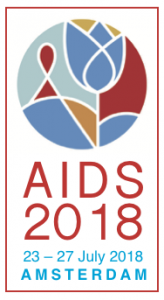No significant decrease in raltegravir free fraction during pregnancy
12 December 2018. Related: Conference reports, Paediatric care, PK and drug interactions, World AIDS 22 Amsterdam 2018.
 Polly Clayden, HIV i-Base
Polly Clayden, HIV i-Base
Pregnancy had only a moderate effect on the active raltegravir (RAL) free fraction in a French pharmacokinetic (PK) study presented at AIDS 2018.
Physiological changes that occur during pregnancy affect RAL, of which total exposure decreases from 29 to 50% during the third trimester compared with postpartum. But albumin levels are reduced during pregnancy, which could increase the active free fraction.
RalFe ANRS160 was conducted to look at unbound, total and glucuronide RAL PK during pregnancy. It was a non-randomised, open label, multicentre phase 2 trial in HIV positive pregnant women receiving RAL 400 mg twice daily.
The investigators collected samples between week 30 and 37 of pregnancy, at delivery and 4 to 6 weeks postpartum. They measured free, total and glucuronide RAL concentrations in 414 samples from 43 women.
They found that pregnancy increased free RAL clearance by 26% for glucuronide formation and 17% for other elimination.
During pregnancy, trough concentrations and exposures decreased by 28 and 37% for total RAL and by 25 and 22% for free RAL. The decrease was low for the glucuronide form.
The investigators noted that this is the first data reporting raltegravir free and glucuronide PK during pregnancy. The effect was moderate on the active RAL free fraction, particularly compared to its inter patient variability. They did not consider this effect to be of clinical importance. And concluded that RAL does not need to be modified during pregnancy.
Reference
Zheng Y et al. Effect of pregnancy on raltegravir free concentrations. AIDS 2018. Amsterdam. 23–27 July 2018. Oral abstract THAB0303.
http://programme.aids2018.org/Abstract/Abstract/11035 (abstract)

